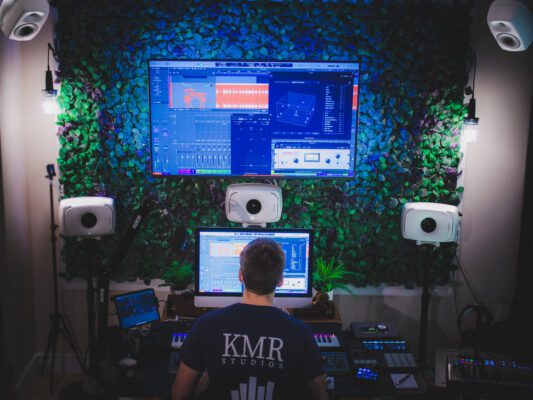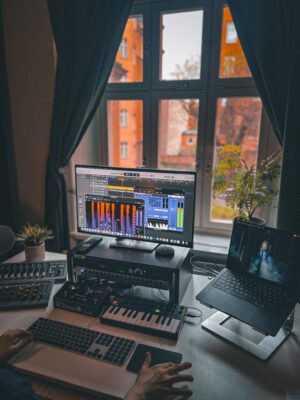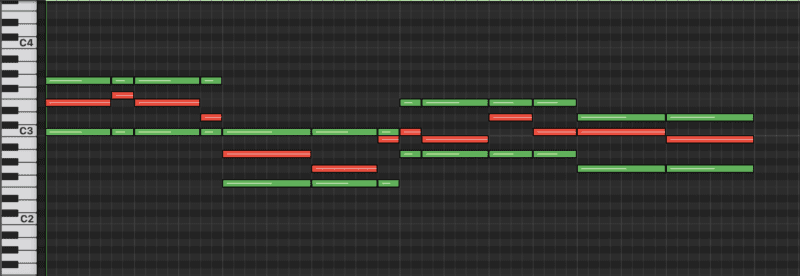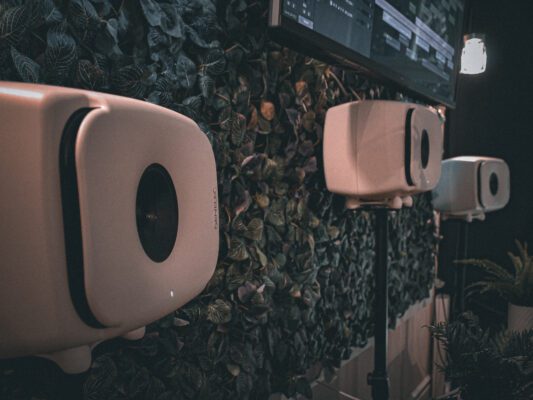What is a Compressor?
Before we delve into different types of compression and compressors, it’s important to understand what a compressor is. A compressor is a processing tool in a DAW (Digital Audio Workstation). In simple terms, it squeezes a sound signal and shapes it by, for example, evening out dynamics and raising the average level. A compressor can also be used to achieve a specific sound in a song.
A compressor has various adjustable parameters:
• Threshold – A level set by the user that determines the dynamic range on which the compressor operates. The audio that exceeds a certain threshold level is processed by the compressor.
• Ratio – How strongly the compressor compresses the signal. A ratio value of 10 and above is often referred to as a limit, as it almost completely reduces anything above the threshold level.
• Attack – Determines how quickly the compressor starts working after the audio exceeds the threshold level.
• Release – The time it takes for the compressor to release the compression when the audio goes below the threshold level.
• Output/gain – Controls the amount of amplification applied by the compressor to the output signal after compression.
Different Types of Compression
There are several different types of compression and types of compressors. These all have their unique characteristics. In this guide, we will discuss six different types.
VCA Compressors
VCA stands for “voltage-controlled amplifier” and is the most common type of compressor. It works by modifying the audio signal (known as “gain reduction”) based on the voltage set on the compressor. VCA compressors have integrated circuits that assist with attack, release, ratio, etc., while keeping unwanted distortion to a minimum. These compressors are versatile workhorses with a wide range of controls. They are often used for 2-bus compression, as well as drums, percussion, synths, and vocals.

VCA Compressor
SSL G Compressor
The most popular VCA compressors include the SSL G Compressor (also known as Quad Compressor) and the DBX 160A. Other classic examples are the Focusrite Red 3 and the API 2500. One of the newer options is the WES Audio Dione. Additionally, there are some expensive high-quality VCA compressors such as the Vertigo VSC-3 and the Shadow Hills Mastering Compressor.
Opto Compressors
Opto stands for “optical,” and these compressors are slower than other types but capable of high gain reduction. They have a relatively simple design that uses a photocell and a light source—traditionally a lamp-like design, but sometimes LED-based. The voltage of the audio signal causes variation in the intensity of the light source, which determines the amount of compression applied.
The photocell’s response to the light source gives this compressor type a unique character. Due to its design, the compressor acts quickly but slows down in release speed as it tails off (known as “stamp on the brakes”). This unique behavior is one reason why opto compressors sound so smooth, natural, and musical. They are well-suited for vocals, sometimes in combination with FET compressors, as well as bass or when you want a natural compression of a sustained sound.

Opto Compressor
Teletronix LA 2A
The most popular opto compressors are the Teletronix LA 2A and 3A. They are often used for kick and snare due to their slow attack. The Tube-Tech CL 1B has become a modern classic, while Golden Age is known for offering an affordable option.
FET Compressors
FET stands for “field-effect transistor.” This type of compressor emerged relatively late as an alternative to Vari-Mu compressors, but today it is the most common design alongside VCA. The design results in a highly colored compression with unique response and sound. FET compressors offer more options than other types—they can be fast, colored, aggressive, or “greedy.” They are particularly well-suited for compression during recording, parallel compression, and anything that needs to be upfront and in the center, such as drums, bass, and aggressive vocals.

FET Compressor
Universal Audio 1176
FET compressors can be punchy and aggressive like the 1176, or they can provide a warm and fuzzy vintage feel like the Drawmer 1978.
Vari-Mu Compressors
Vari-Mu, previously known as Delta-Mu, is one of the oldest types of compressors. It uses tubes to achieve gain reduction. The tubes are influenced by the input voltage, resulting in slow or monocular compression. Some newer variants have controls for attack and release, but due to the tubes, they tend to have a slow attack regardless.
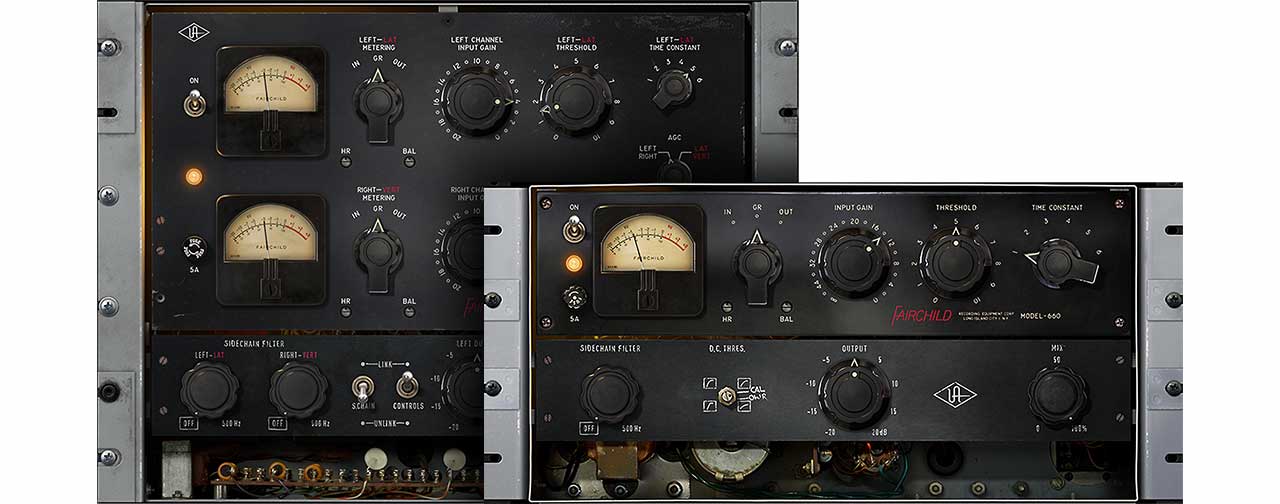
Vari-Mu Compressor
Fairchild 670 and 660
The most renowned Vari-Mu compressor is the Fairchild, available in the 670 and 660 models. With its 34 kg weight, 20 tubes, and 14 transformers, it achieved legendary status in studios worldwide. It is known for handling generous amounts of gain reduction without compromising sound quality. In the mix bus or mastering, the Fairchild excels at gluing tracks together rather than controlling dynamics, unlike a VCA, for example. The original is no longer available, but newer variants that have already become classics include the Manley Vari-Mu and the Retro Instruments 176.
PWM Compressors
PWM stands for “Pulse Width Modulator.” It is an old technology used in vintage compressors as well as newer ones. PWM allows for efficient control of gain reduction without sacrificing sound quality. The fundamental idea is that audio is energy in electric form inside the equipment, so when you use the compressor for gain reduction, it is essentially reducing the energy. Due to the complex technology involved, this type of compressor is rare. It is used when you want the sound to remain uncolored and even provides a cleaner sound than VCA compressors.

PWM Compressor
Crane Song STC-8
Dave Hill is often considered the top developer of PWM compressors. Some notable examples include the Crane Song STC-8, The Pye Compressor, and the Great River PWM-501 (500-series).
Diode-Bridge Compressors
Diode-Bridge compressors produce the most colored sound of all types of compression. Therefore, at first glance, they may not seem very versatile, but in fact, they can make most audio passing through them sound better. Using a diode to control gain reduction introduces significant distortion, which in the older design required reducing the gain by 40 dB. This affected the so-called “noise level-ration.”
Diode-Bridge compressors used to be rare because they were considered too noisy, and their development progressed slowly. However, they turned out to be perfect for the digital era, leading to an improved design that provides a thick and colored sound that sounds fantastic and is free from noise. They are now used for mixing everything from vocals to percussion but are also becoming more prevalent in mastering.

Diode-Bridge Compressor
Heritage Audio Successor
One of the most famous and best Diode-Bridge compressors is the Heritage Audio Successor. Other notable examples include the Chandler Limited LTD-2, AMS Neve 33609 (a modern version of the 2254), Neve 535 (500-series), and Chandler Zener Limiter.
We hope this guide has been helpful to those who want to learn more about different types of compression and compressors. If you have further questions, please don’t hesitate to contact us! You can also read more about digital compressors in Logic Pro X.
Guides
What is a clipper?
Have you started out in the world of mixing and mastering and just came across [...]
5 Clippers taking your mix to new heights
Are you not sure what Clipper to use when mixing and mastering your music? We [...]
Mastering Vocal Harmonies
Read more about what strategies you could use to learn more about, and eventually master, [...]
Export master files from Atmos projects in Logic Pro
This article gives you detailed information on how to export master files from Logic Pro [...]
Contact Us

CONTACT US
OUR PORTFOLIO
Over the past few years, KMR Studios has released hundreds of songs by a wide range of artists. To make it easier for you to find what you’re looking for, we’ve organized the music into various playlists. Click the link below to explore our music by format (stereo or Dolby Atmos) or genre.
Portfolio
 Svenska
Svenska

